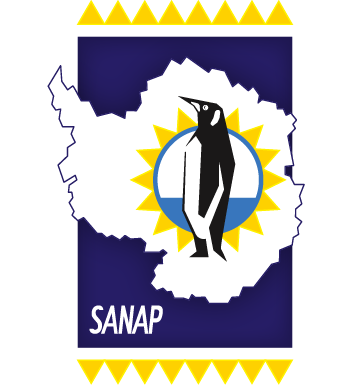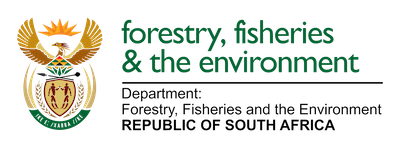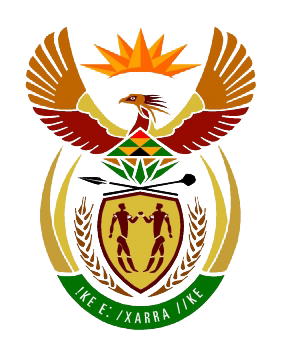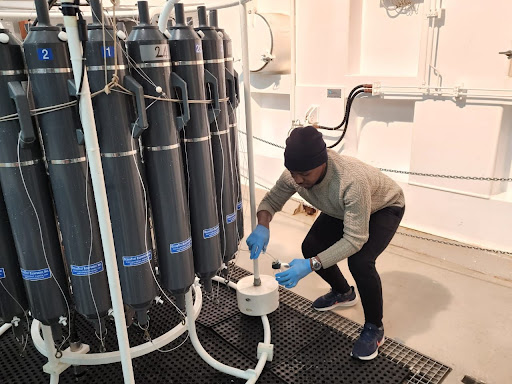
by Ria Olivier | Jul 29, 2022 | Antarctica, Current Event, Research, SA Agulhas II, SANAP, Science, Southern Ocean, sub-Antarctic
A CSIR-SOCCO – DFFE-Oceans & Coasts partnership
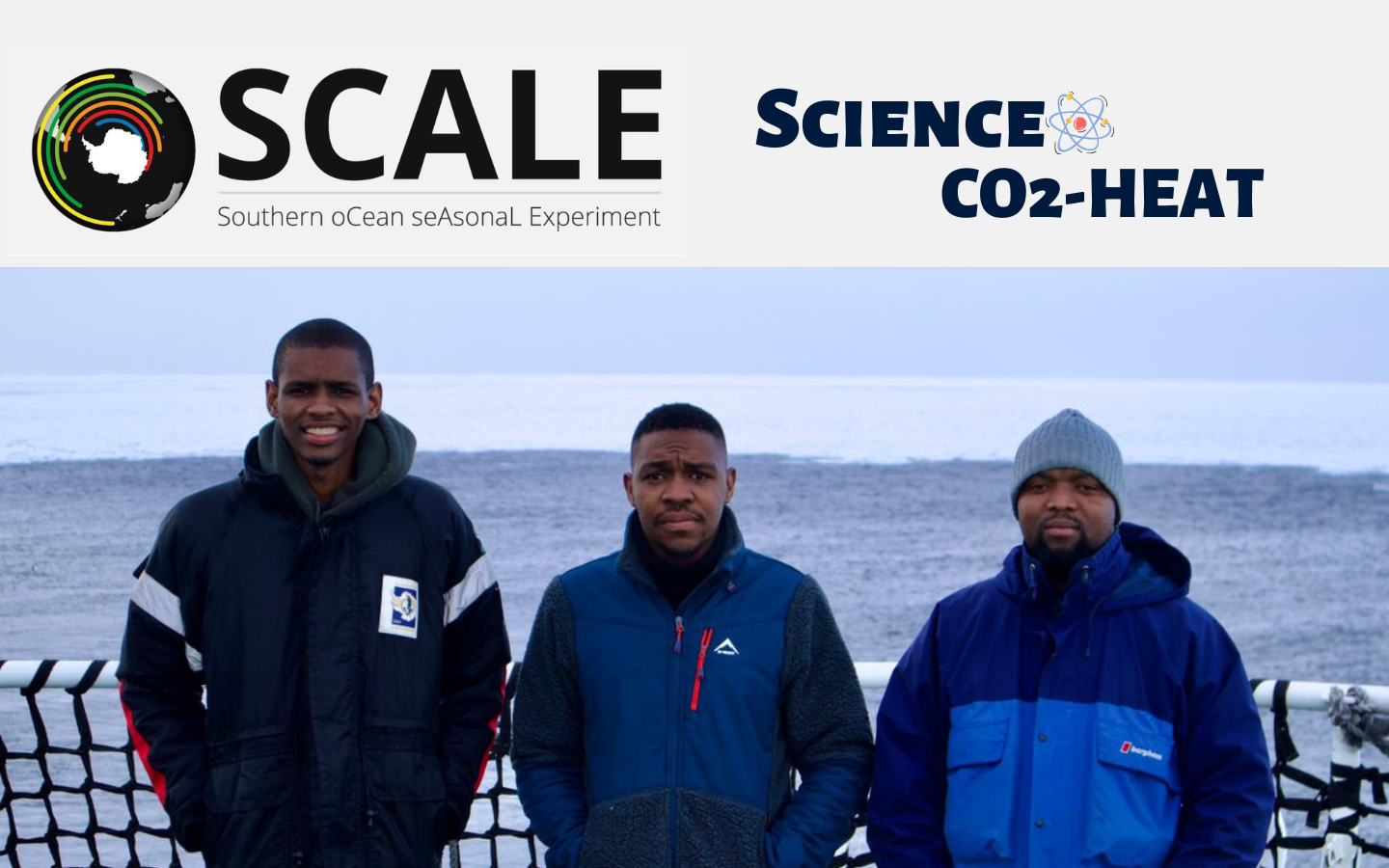
Team CO2-HEAT (L-R): Bubele Rasmeni, Siyabulela Hamnca and Baxolele Mdokwana.
| TEAM | CO2-HEAT |
| Project Name | Contemporary and Future Drivers of CO2 and Heat in the Southern Ocean |
| Principal Investigator | Sarah Nicholson | Council for Scientific and Industrial Research (CSIR) |
| Co-Principal Investigator | Pedro Monteiro | Council for Scientific and Industrial Research |
| Co-Principal Investigator | Sebastiaan Swart | University of Gothenburg |
Onboard CO2-HEAT team members:
| Team Member | Role | Affiliation |
| Siyabulela Hamnca | Onboard Team Leader | Council for Scientific and Industrial Research |
| Baxolele Mdokwana | Technician | Department of Forestry, Fisheries and the Environment (DFFE) |
| Bubele Rasmeni | Technician | Department of Forestry, Fisheries and the Environment |
Contemporary and Future Drivers of CO2 and Heat in the Southern Ocean
The contemporary Southern Ocean mitigates the effects of anthropogenic climate change through its disproportional uptake of carbon and heat. However, it is not well understood how this role will evolve under different emission and mitigation scenarios. The Southern Ocean also remains the largest source of global ocean uncertainty in the global estimates of CO2 and heat fluxes. While much has been achieved globally and regionally in constraining the variability and some of the mechanisms that drive Southern Ocean CO2 and heat fluxes separately, we propose that a significant part of the challenge lies in the lack of research on CO2 and heat together to better understand the feedback and the mechanisms that drive those feedbacks.
This SANAP-NRF project aims to examine the changing role of the Southern Ocean in global climate by looking at the two main drivers CO2 and heat, in an integrated way using an unprecedented 10-year high resolution glider dataset from the 2012-2022 SOSCEx experiments, prognostic biogeochemical models, and new observational experiments planned in partnership with CSIR and DFFE as well as the SO-CHIC EU H2020 project. This collaboration is undertaken as part of the emerging National Ocean CO2 Facility, a research infrastructure integration between CSIR and DFFE within SAPRI and hosted at DFFE.
We aim to gain a better understanding of how the interaction of atmospheric synoptic cycles (storms) and fine-scale (0.1-100 km) ocean processes influence seasonal-decadal variability of CO2 and heat fluxes. This will include the extent to which they feedback on each other and ultimately contribute to a better understanding of the role of the Southern Ocean in the global carbon-climate system.
The expected three outcomes are:
- Improved observational constraints for the contemporary seasonal-interannual variability of CO2 and heat fluxes.
- Understanding of how storms and their interaction with fine-scale dynamics influence the seasonal and interannual variability of CO2 and heat fluxes.
- Identify the potential mechanisms that could explain the decadal anomaly in CO2 fluxes at the end of the 20th century.
Winter cruise sampling:
The SCALE Winter-2022 cruise provides an important opportunity to address a key source of uncertainty in annual Southern Ocean CO2 and heat observations – the dearth of winter time observations. While the lack of winter observations has been improved by the recent proliferation of SOCCOM floats, ship-based observations remain highly valuable as an independent and direct measurement of CO2 and importantly include heat flux observations. On the SCALE Winter-2022 cruise, the CO2-Heat team will be sampling profiles of dissolved inorganic carbon (DIC) and Total Alkalinity. The underway pCO2 system will also be operated during the cruise. Simultaneously, the heat flux sensors are in continuous operation measuring the short and long-wave radiation on minute time-scales. In addition, as part of SO-CHIC, two Saildrones will overlap with the ship sampling path for calibration of measured CO2 and heat flux. The Saildrones will remain in the Southern Ocean sampling heat and CO2 fluxes for the remainder of winter. These key winter observations will be contrasted to the previous summer observations made during the dedicated SO-CHIC cruise in January 2022.

Dr Siyabulela Hamnca in action during SCALE-WIN22.

For more information visit:
Text supplied by Sarah Nicholson (PI).
Featured image supplied by Kurt Martin (SAPRI trainee).
Anche Louw, Antarctic Legacy of South Africa, 29 July 2022.
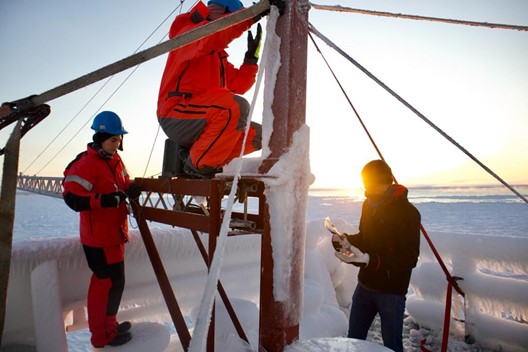
by Ria Olivier | Jul 27, 2022 | Antarctica, Current Event, Engineering, Research, SA Agulhas II, SANAP, Science, Southern Ocean, STEM
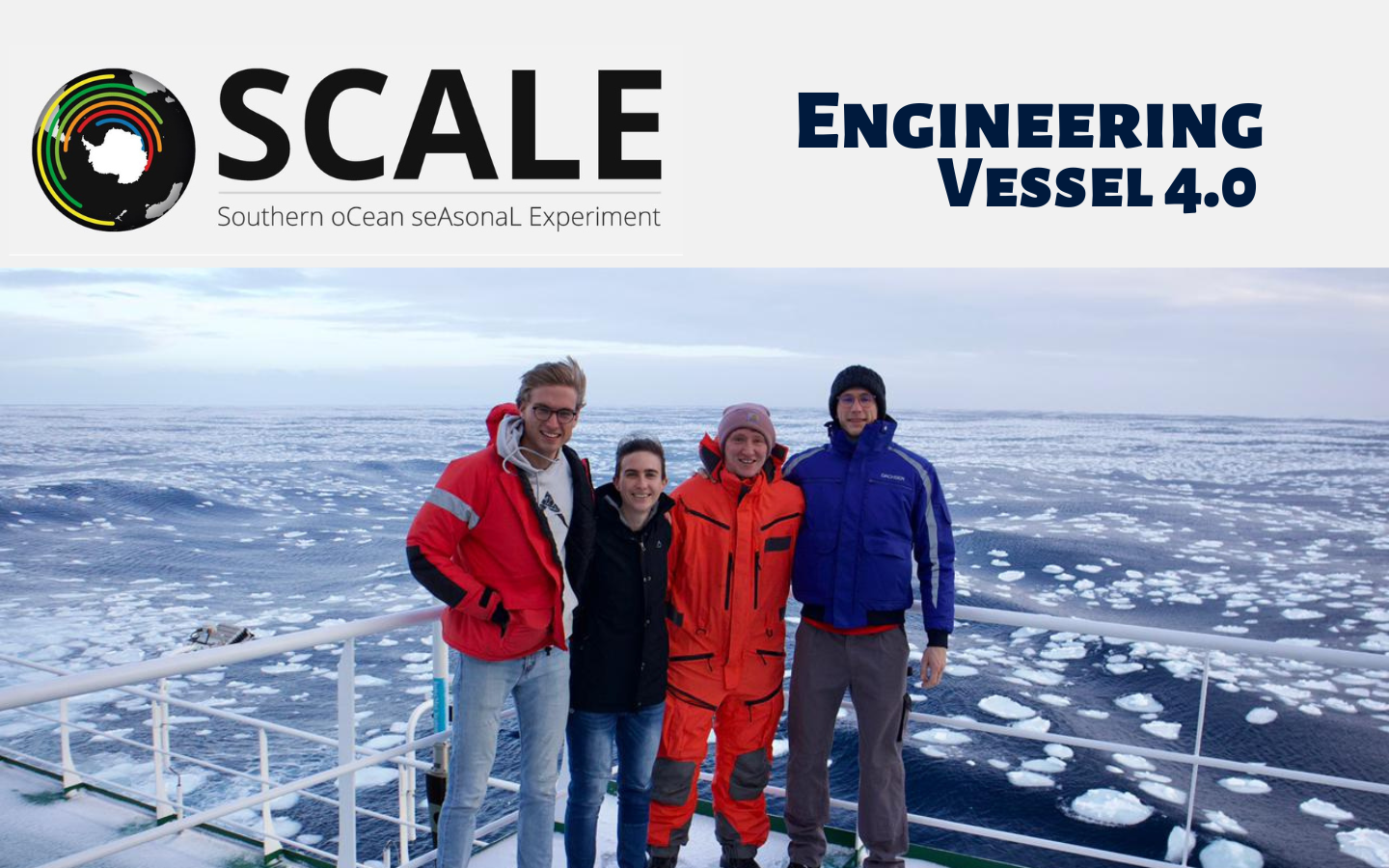
Vessel 4.0 team photo in marginal ice zone. In the photo (left to right): Christof van Zijl, Nicole Taylor, Marek Muchow and Markus Gilges.
| TEAM | VESSEL 4.0 |
| Project name | The Digital SA Agulhas II – Flagship for Vessel 4.0 |
| Principal Investigator | Annie Bekker | Stellenbosch University |
Onboard team members:
| Team Member | Role | Affiliation |
| Nicole Taylor | PhD
Onboard Team Leader | Stellenbosch University |
| Marek Muchow | PhD | Aalto University (Finland) |
| Christof van Zijl | PhD | Stellenbosch University |
| Markus Gilges | PhD | RWTH Aachen University (Germany) |
More about the team and the project:
Nicole and Christof of the Sound and Vibration Research Group of Stellenbosch University, in collaboration with Markus of the HealthProp consortium and Marek of Aalto University, comprise the Vessel 4.0 team. The aim of Team Vessel 4.0 is to investigate the responses of the S.A. Agulhas II as she travels through open water and sea ice during SCALE Winter Cruise 2022.
The S.A. Agulhas II is instrumented with a multitude of sensors, like accelerometers and strain gauges. These sensors function like an internal nervous system, enabling the Vessel 4.0 team to “sense” each vibration and motion of the ship as she breaks through waves and sea ice. So far, the S.A. Agulhas II has had to endure repeated “belly-flops” as she slams into incoming waves (see image below), as well as noteworthy rolling and pitching motions as she climbs and descends large swells on her journey through the Southern Ocean.
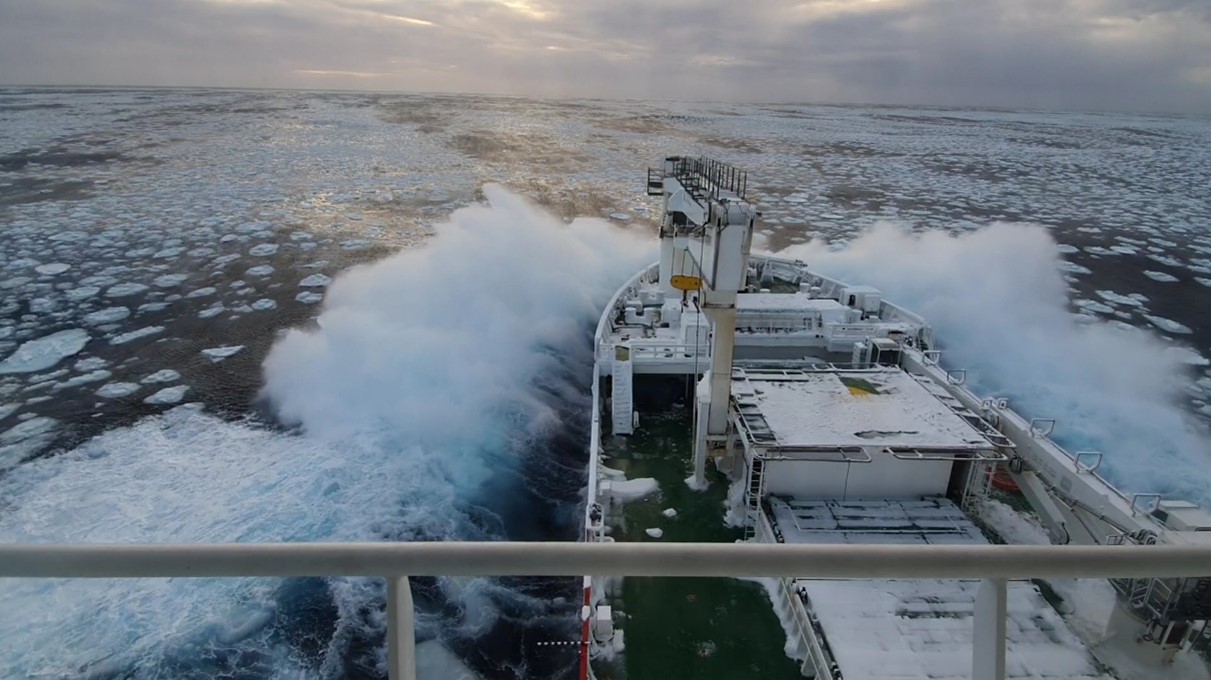
The S.A. Agulhas II in a bow slam while in the marginal ice zone (MIZ). Photo Credit: Nicole Taylor.
The team is particularly interested in studying the loads that the ice and waves cause to the hull and propulsion system of the ship. They perform engineering analyses of measurements from the hull and propulsion system to understand how intensively the Southern Ocean and its sea ice require the S.A. Agulhas II to work while navigating through winter conditions. In the image below (left), Markus is shown monitoring his measurement system located in the shaft line.
Additionally, the team is performing visual observations of the sea and ice state around the S.A. Agulhas II throughout the time of the cruise. It helps to record details about the environment that the ship encounters so that the team members have a clearer picture of what the installed nervous system is sensing. Team members spend hours being the “eyes” of the nervous system, writing down metrics like what the wave height and the direction of the main wave train is when in open water, or, when in ice, how thick the ice is and what type of ice the ship is breaking through. Christof is shown seated in the bridge while recording the sea ice conditions in the image above (right). The ice observations are done 24/7 while they are in the marginal ice zone with spotlights on during the night.
The team also uses other instruments, like cameras and lasers, to take measurements and snapshots of the ship’s environment. These really help when working through the measurements and visual observations back in the office after the cruise to understand what happened on board. In the image below Marek, Nicole and Christof are shown in the process of installing an ice thickness measurement system at the bow of the ship.

Ice thickness measurement system installation. In the photo (l-r): Nicole Taylor, Marek Muchow and Christof van Zijl. Photo credit: Kurt Martin.
Along with carefully studying the ship and the environment she interacts with, the team has recruited passengers to participate in their human response research to better understand how people experience living and working on board. During Winter Cruise, the team has distributed custom-developed human-centric software in conjunction with more traditional questionnaires. Through the Mariner 4.0 mobile application and daily diary booklets, participants are equipped to record their daily perception of vibration, noise and motion that may cause them discomfort or illness. The Mariner 4.0 application enables real-time data capturing and analysis on board that has a greater aim to support monitoring and managing of human activities. For example, this could be used to assist with planning research on board and navigation decisions to maximize the time during which researchers are estimated to be the least motion sick and able to work well.
 Read more about the research that Team Vessel 4.0 team members are part of:
Read more about the research that Team Vessel 4.0 team members are part of:
Text supplied by Team Vessel 4.0
Featured images supplied by Kurt Martin (SAPRI trainee)
Anche Louw, Antarctic Legacy of South Africa, 27 July 2022

by Ria Olivier | Jul 27, 2022 | Antarctica, Current Event, Oceanography, Research, SA Agulhas II, SANAP, Science, Southern Ocean, STEM
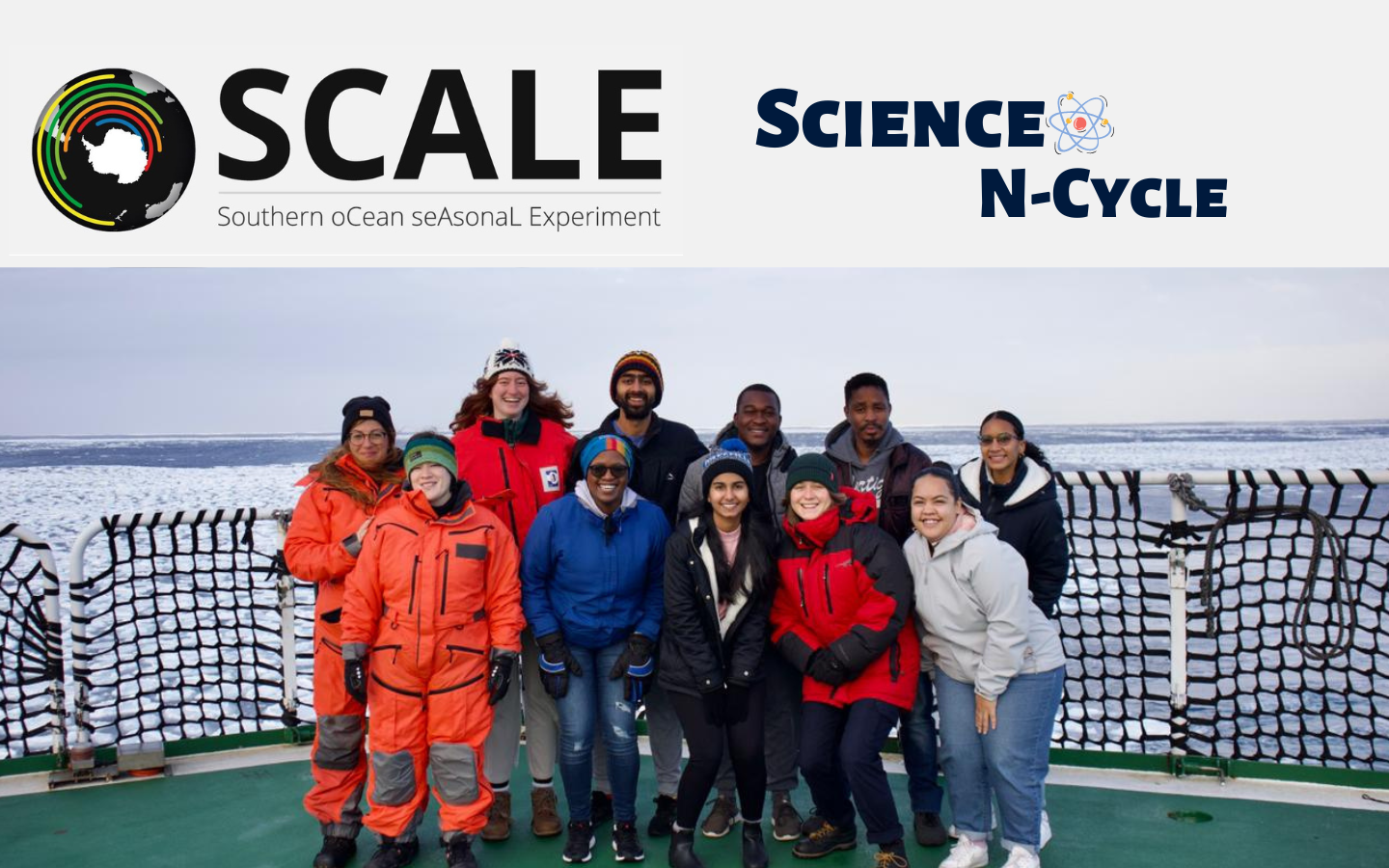
N-Cycle team onboard the S.A. Agulhas II. Back (left to right) Letizia Tedesco, Christina Monteiro, Brishan Kalyan, Nkateko Maholobela, Mhlangabezi Mdutyana, Aldean Esau; (front) Lumi Haraguchi, Sizwekazi Yapi, Sadiyah Rawat, Amelia Deary, Venecia van Balla.
| TEAM | N-CYCLE |
| Project name | Nitrogen cycle in the Southern Ocean |
| Principal Investigator 1 | Sarah Fawcett | University of Cape Town (UCT) |
| Principal Investigator 2 | David Walker | Cape Peninsula University of Technology (CPUT) |
Onboard N-CYCLE team members:
| Team Member | Role | Affiliation |
| Mhlangabezi Mdutyana | Team Leader | UCT
|
| Amelia Deary | MSc | UCT
|
| Sizwekazi Yapi | MSc | UCT
|
| Christina Monteiro | Honours | UCT
|
| Sadiyah Rawat | Honours | UCT
|
| Lumi Haraguchi | Postdoc | SYKE, Finland
|
| Aldean Esau | Honours | CPUT |
| Venecia van Balla | Honours | CPUT |
| Nkateko Maholobela | Honours | CPUT |
| Brishan Kalyan | MSc | NMU
|
| Letizia Tedesco | Researcher | SYKE, Finland |
The project description as per the sailing orders for the SCALE Winter Cruise of 2022:
Thirty years ago, John Martin proposed that the high nitrate concentrations left unconsumed in Southern Ocean (SO) surface waters result from iron-limitation of phytoplankton growth. Extensive culture and (CPUT) fieldwork has since confirmed the central role of iron in photosynthesis and nitrate assimilation. Because of the implications for CO2, most studies of coupled iron and nitrogen (N) cycling have focused on nitrate assimilation, with little attention paid to the role of iron in mixed-layer N (re-)cycling. Our preliminary data suggest that iron availability exerts a strong control on N regeneration; if verified, this has implications for our mechanistic understanding of the N cycle, now and in the future when the iron supply to the surface SO is predicted to rise.
On this cruise, we plan to interrogate the role of iron in the upper SO N cycle at high resolution through extensive iron amendment experiments. We will also examine the composition and functioning of the associated planktonic (auto-, mixo- and heterotrophic) community. Diverse aspects of Southern Ocean physics and chemistry are already experiencing climate-induced changes; a major motivation for this work is to develop expectations for Southern Ocean fertility and ecology in response to such changes. This work is also relevant for the nutrient supply to the low-latitude ocean, which is controlled by both the extent of nutrient uptake in Southern Ocean surface waters and the ratios in which these nutrients are consumed; the latter is strongly affected by iron availability and plankton species composition.
Cape Peninsula University of Technology students, under the supervision of Dr David Walker, will be investigating chlorophyll-a concentrations and phytoplankton assemblages at all the CTD and process stations, as well as in ice core samples.
Follow Dr Fawcett on Twitter and check out the Marine Biogeochemistry Lab website (links below).


Text and images supplied by the N-Cycle team and Kurt Martin (SAPRI Trainee)
Anche Louw, Antarctic Legacy of South Africa, 27 July 2022.
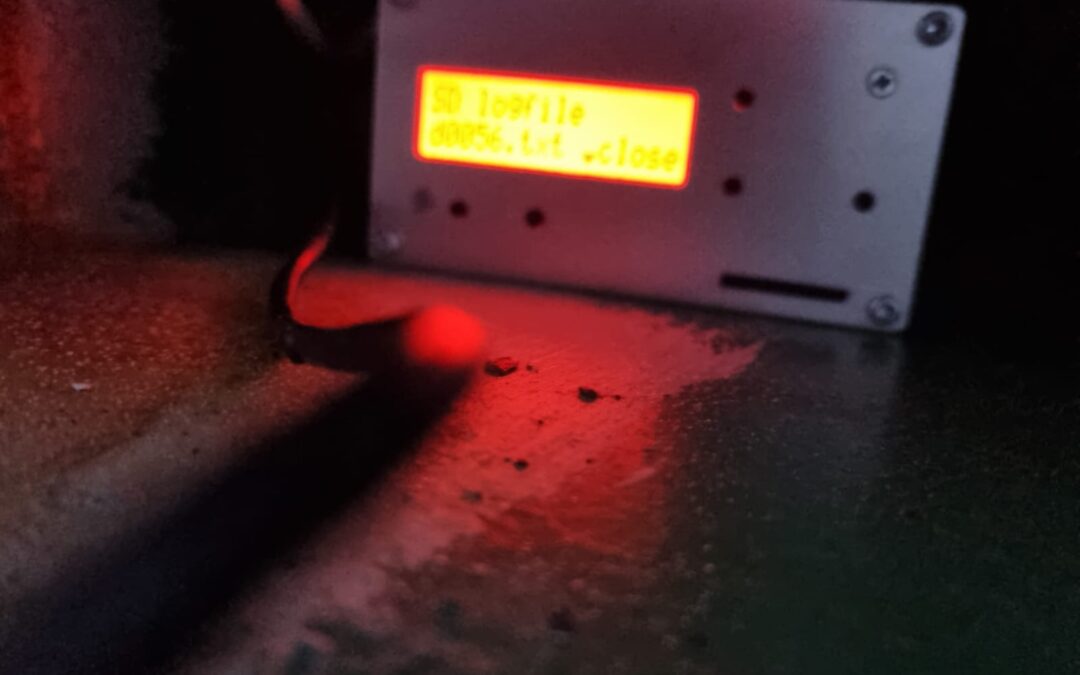
by Ria Olivier | Jul 26, 2022 | Antarctica, Current Event, Engineering, Research, SA Agulhas II, SANAP
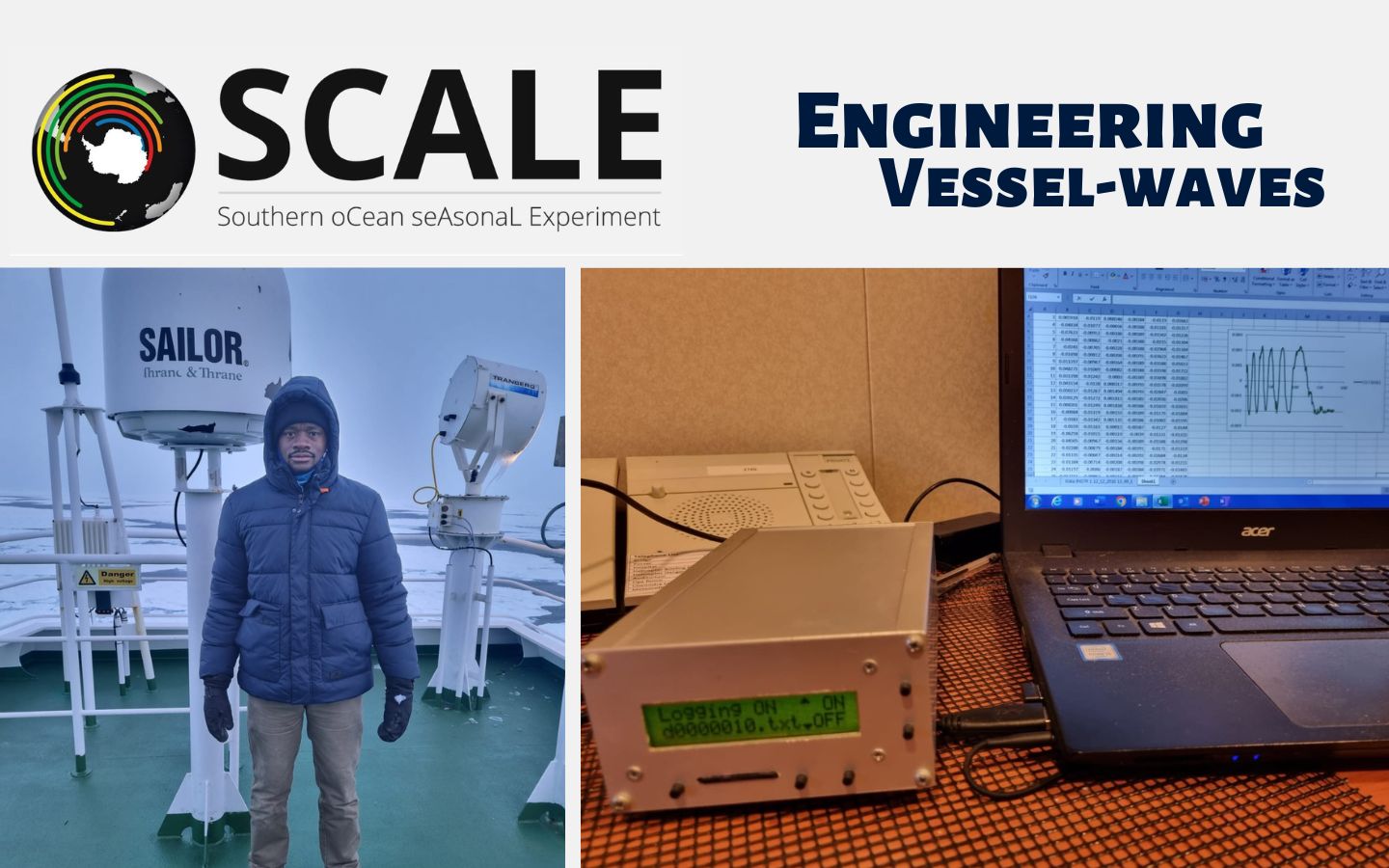
L-R: Paul Senda (onboard team member). Data recorded with the sensor in Room 7320 are being interpreted with mathematical modeling.
| TEAM | VESSEL-WAVE |
| Project name | Reconstruction of sea surface elevation from moving vessel |
| Principal Investigator | Butteur Ntamba Ntamba | Cape Peninsula University of Technology (CPUT) |
| Onboard team member/team leader | Paul Senda | CPUT |
More about the project:
Four IMU (Inertia Measurement Unit) sensors are installed on the S.A. Agulhas II – two sensors are near the center of gravity of the ship, one on the monkey deck and one on deck 7 (Room 7320 – for quick verification of the code). The sensor is a small, self-contained strap-on system and records the time series of roll, pitch and heave.
We know the ship’s response to waves, as described by Response Amplitude Operators (RAO). These must be computed numerically from the shape of the ship’s hull (the hull of the SAAII, which I obtained while she was on dry dock in 2019. We did a 3D scan of the vessel with Prof Bekker). We have developed software which relates the observed time series with the RAOs to the statistical characteristics of the sea state. Once it works, we can use a ship as a sensor for the sea state in which it travels.
Data recorded using the IMU are used to verify the algorithm or mathematical model and existing software predicting or giving the input to the ship’s motion on the sea which is waves. The understanding of sea waves will allow people or vessels for better seakeeping, seakeeping behavior and identify parts of the ship that affect good seakeeping.
Text and images supplied by Paul Senda.
Anche Louw, Antarctic Legacy of South Africa, 26 July 2022.
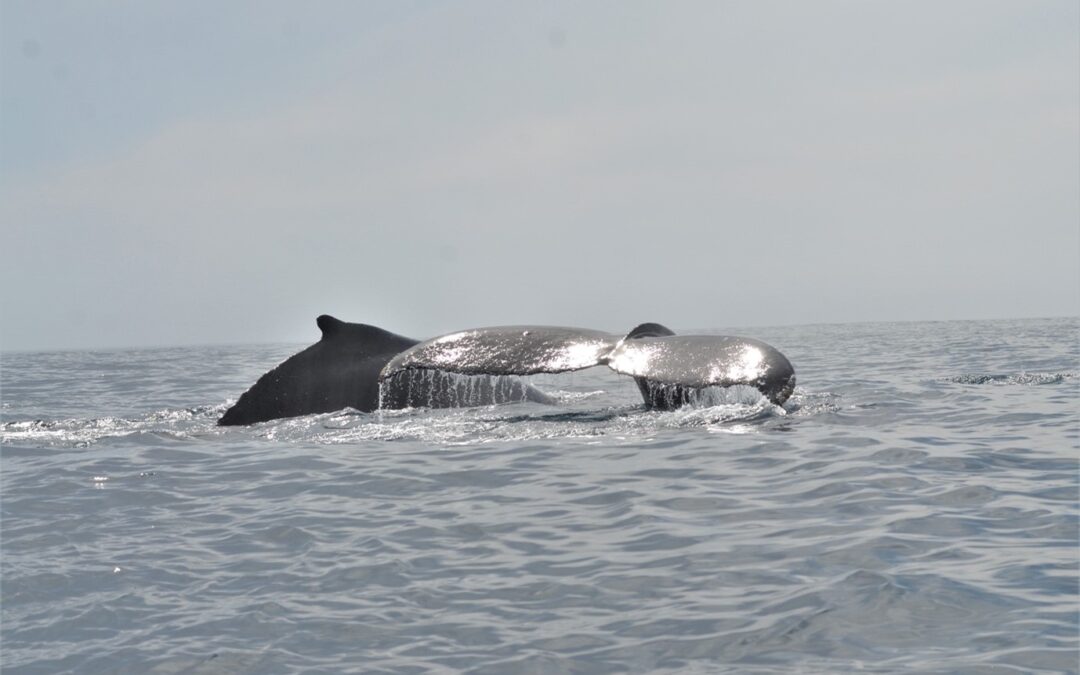
by Ria Olivier | Jul 26, 2022 | Antarctica, Current Event, Research, SA Agulhas II, SA Polar Research Infrastructure, SAPolarRI, Science, Southern Ocean, STEM
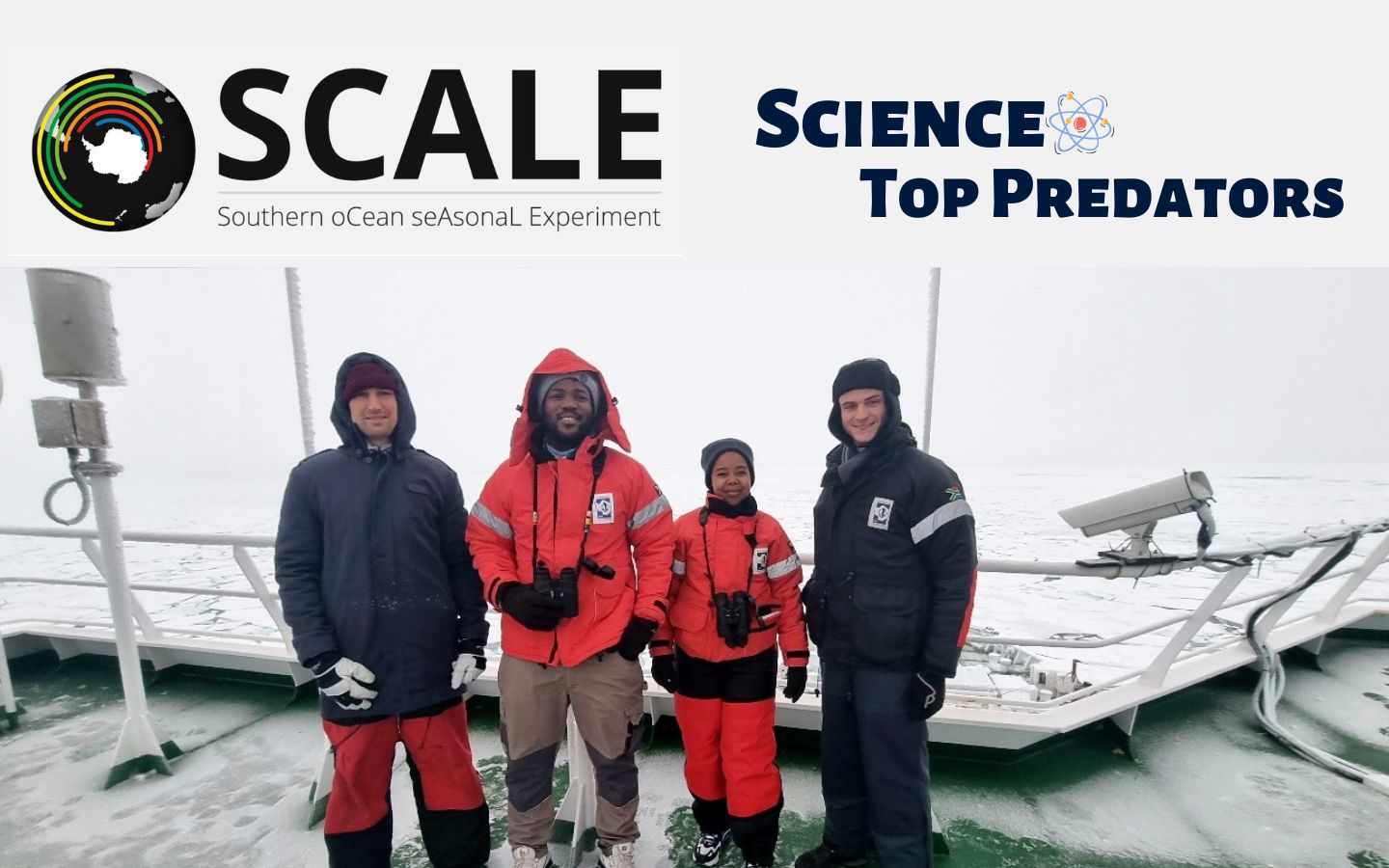
Top Predator team for seabirds and marine mammal observations during SCALE cruise 2022: (left to right) Matthew Germishuizen, Makhudu Masotla, Mpumalanga Mnyekemfu, and Estefan Pieterse.
| TEAM | TOP Predators |
| Project name | Top predator assemblages, distribution and abundance in the Southern Ocean |
| Principal Investigator | Azwianewi Makhado | Department of Forestry, Fisheries and the Environment (DFFE), Branch: Oceans and Coasts |
Onboard Top Predators team members:
| Team Member | Role | Affiliation |
| Makhudu Masotla | Team Leader
Research fellow
eDNA, Plastic pollution, At sea observer
| Department of Forestry, Fisheries and the Environment |
| Mpumalanga Mnyekemfu | Seabirds At sea Observer | Department of Forestry, Fisheries and the Environment |
| Matthew Germishuizen | Mammals At sea observer | Mammal Research Institute, University of Pretoria |
| Estefan Pieterse | Mammals At sea observer | Mammal Research Institute, University of Pretoria |
More about the project:
Seabirds and marine mammals are often the early indicators of changes in an ecosystem and display the effects of climate change vividly. Their distribution can be grouped into assemblages; which are species occurring in space and time. Ocean currents, physical and chemical forces generate nutrients necessary for primary productivity that accumulates biomass. These create hot spots of ecologically important zones for seabirds, marine mammals and several other marine taxa. There is a direct linkage of these structures to seabed topography, physical water properties and some oceanographic processes, such as fronts, eddies and local upwellings. Prey availability is mostly influenced by these features, therefore it is expected for top predators, such as seabirds to be found in these areas.
The overarching purpose of this expedition was to collect distribution and abundance data on seabirds, and marine mammals. We envisage several conservation applications using data that this project should generate, such as to define ‘ocean hotspots’, where visible marine life (such as seabirds or cetaceans) congregate in relative abundance and with some degree of consistency. Further objectives are to identify important areas for highly threatened species such as albatross and petrels. These areas might become marine Important Bird Areas or contribute to the designation of Marine Protected Areas, special nature reserves on the high seas, and no-take zones to protect sensitive species from commercial fishing. The additional aim is to determine the distribution and abundance of seabirds and marine mammals in the southern ocean in relation to a number of different environmental variables (e.g. surface temperature, chlorophyll, fronts, etc.) in order to address the knowledge gap around their at-sea movements in our study area.
Acoustic data
Antarctic krill Euphausia superba is a keystone species in the Antarctic ecosystem as it is prey to various top predators i.e. seabirds, whales, seals, and fish. To establish predator-prey relationships between marine mammals/seabirds and krill, acoustic data will be collected from three transducers (i.e. 38, 120 and 200 kHz) mounted on the drop keel of the SA Agulhas II. The data collection will not interfere with any other scientific operations and will be autonomously logged. Information produced by this study will give relative abundance and distribution of krill relative to the visually observed seabirds and marine mammals. This information will also be crucial for the management and conservation of different endangered marine animals.
Environmental DNA (eDNA) detection represents a powerful tool for assessing aquatic biodiversity and for the efficient detection of “hard-to-find species,” including top predators. Detection of a species-specific eDNA sequence implies the presence of this species in a certain area. Knowledge of prey items established using metabarcoding within the scats, guano, pellets, stomachs and regurgitates of mid-level and high-level components of the food web may highlight spatial differences in diet, behavior, or environmental pressure. Metabarcoding has the potential to assess the presence of hundreds of species in both the environment and the diet of predators. The top predators team will therefore be collecting eDNA samples towards the fulfillment of the metabarcoding objective.
Text and images: AB Makhado, M Seakamela, M Germishuizen, M Mnyekemfu, E Pieterse and MM Masotla.
Anche Louw, Antarctic Legacy of South Africa, 26 July 2022.
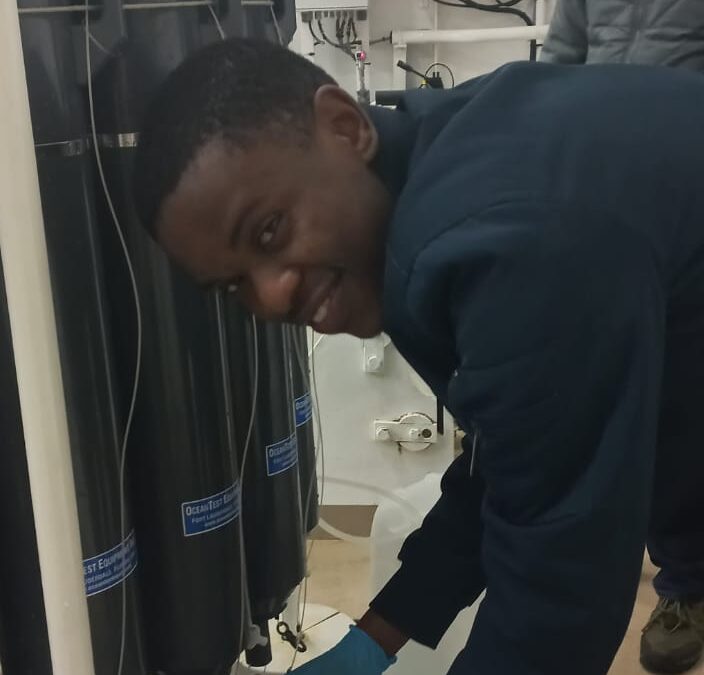
by Ria Olivier | Jul 25, 2022 | Antarctica, Current Event, Research, SA Agulhas II, SANAP, Science, Southern Ocean
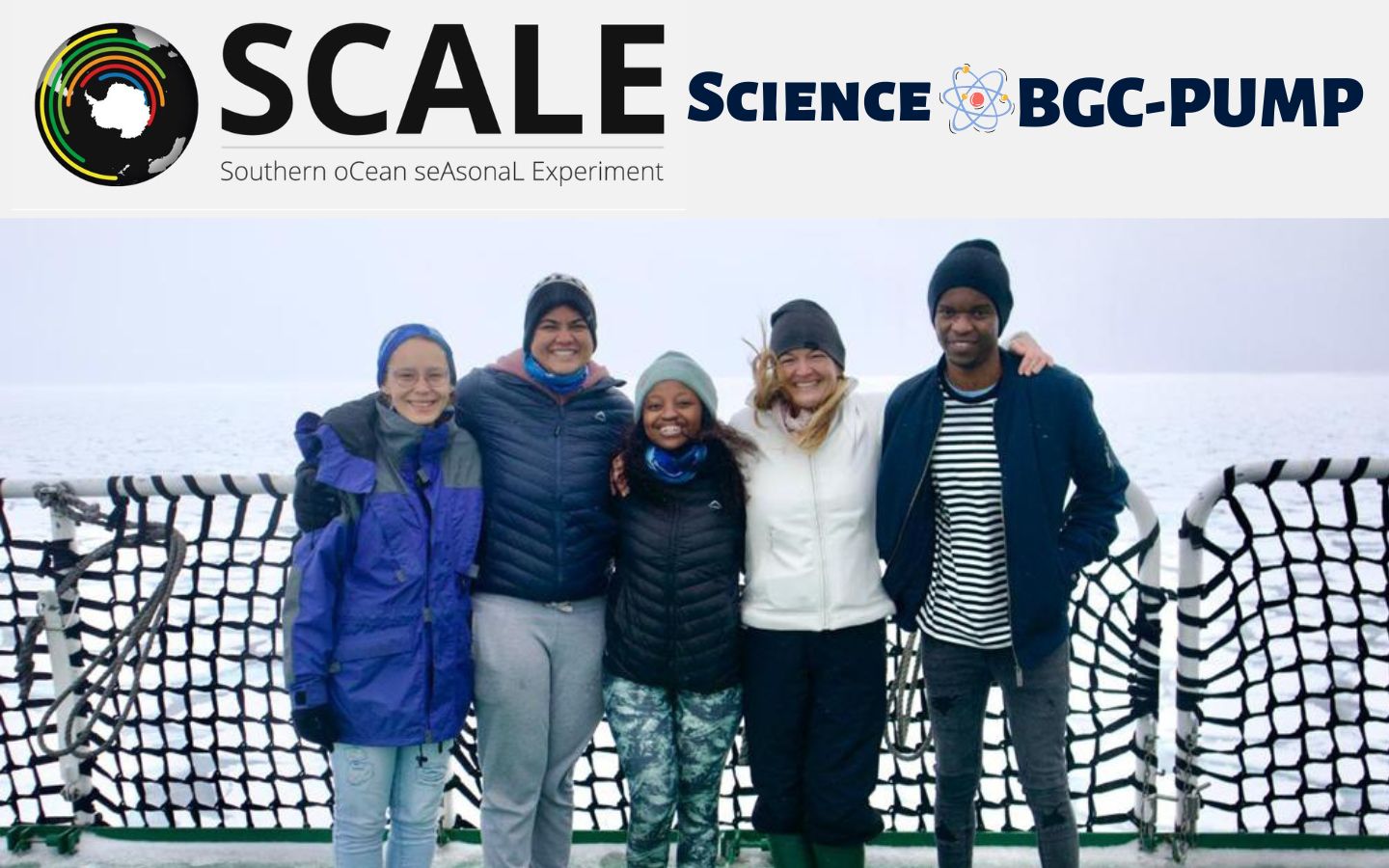
| TEAM | BGC-PUMP |
| Project name | Climate sensitivity of the Southern Ocean biological
carbon pump |
| Principal Investigator | Sandy Thomalla | Council for Scientific and Industrial Research (CSIR) |
| Principal Investigator | Thomas Ryan-Keogh | CSIR |
| Co-Principal Investigator | Lisl Lain | CSIR |
Onboard team members:
| Team Member | Role | Affiliation |
| Lisl Lain | Onboard Team Leader | CSIR |
| Annicia Naicker | PhD | CSIR |
| Attang Biyela | PhD | CSIR |
| Lillina Ruiters | MSc | CSIR |
| Sifiso Mpapane | MSc | CSIR |
More about their research:
Phytoplankton primary production and carbon export to the deep ocean, (i.e. the biological carbon pump) are considered a major contributor to the sink of natural Carbon Dioxide (CO2) removing an estimated 3 Pg (Petagrams) of carbon from surface waters south of 30°S each year (33% of the global organic carbon flux) (Schlitzer et al., 2002).
The Southern Oceans biological carbon pump also plays an important role in regulating the supply of nutrients to thermocline waters (Subantarctic Mode Water and Intermediate Water) of the entire Southern Hemisphere and North Atlantic (Sarmiento et al., 2004), which in turn drives low latitude productivity and associated carbon export (Sigman and Boyle, 2000). As such, changes to the biological carbon pump are considered to have the potential to be one of the most important positive feedbacks on climate change (Hauck et al., 2015). Expected changes in the Earth’s climate will alter sea surface temperatures, water column stability (stratification), mixing and pH (ocean acidification), all of which will impact phytoplankton production and the effectiveness of the Southern Ocean biological carbon pump. However, the processes and dynamics that define the direction, the magnitude and the rates of change (ie: climate sensitivity) are not well understood. Part of our lack of understanding of this complex problem lies in the chronic under-sampling of the region and inappropriate parameterisation of biological processes in Earth System Models (used to predict global climate projections) that do not reflect Southern Ocean processes.
SOCCO research addresses this challenge by deriving regionally robust information from observations that allow new insight into Southern Ocean ecosystem function. This multifaceted approach aims to 1) characterise the phytoplankton population and drivers of variability of primary production and carbon export efficiency, 2) investigate the impacts of ocean acidification from a multi driver context and 3) develop and apply ocean colour algorithms for insight into a) intra-seasonal and inter-annual variability and b) long-term trends. Understanding gained from this research provides the basis for revised model parameterisations of Earth System Models to better represent Southern Ocean processes for improved climate projections.
What is currently being done on the SCALE Winter cruise:
Our group is responsible for carrying out routine measurements that characterise the phytoplankton population such as chlorophyll-a concentration (a proxy for phytoplankton biomass), particulate size distributions, particulate organic carbon (POC) & dissolved organic carbon (DOC) concentrations, community structure composition (from high-performance liquid chromatography, (HPLC)), and particulate absorption.
In addition, our group is carrying out four different sets of experiments that investigate various aspects of the role of the biological carbon pump. The first carried out by PhD student Attang Biyela examines the combined effects of temperature and ocean acidification on phytoplankton primary production, nutrient uptake, physiology, and community structure through a series of multiple driver manipulation incubation experiments that simulate projected temperature and pH conditions.
The second set of experiments carried out by MSc student Lillina Ruiters uses a chlorophyll fluorescence technique (termed fast repetition rate fluorometry – frrf) to estimate rates of primary production through the derivation of electron transport rates as a measure of photosynthetic capacity. Her study then uses a statistical approach to investigate the uncertainties that result from various mathematical models to derive rates of primary production and the dominant ecological drivers of variability in key photophysiological parameters.
The third set of experiments carried out by team leader Lisl Lain and MSc Student Sifiso Mpapane looks at the optical effects of photoacclimation and iron limitation on phytoplankton inherent optical properties (IOP’s) in order to better interpret satellite radiometry and optimise the retrieval of phytoplankton optical properties and hence biogeochemical quantities from satellite. These responses are frequently characterised by an increase in cellular chlorophyll, which can lead to an overestimate of biomass by satellites, and has consequences for our understanding of chlorophyll-a concentration as a proxy for biomass and hence carbon retrievals.
Finally, the fourth experiment carried out by PhD student Annicia Naicker collected sinking organic particles (termed marine snow) at different depths in the water column in order to develop a better understanding of the role of particle size, ballasting and the activity of microbes in dictating the drivers of efficiency of the biological carbon pump in the Southern Ocean.
Together these various approaches will help improve our understanding of the complex and vital role of the Southern Ocean biological carbon pump in regulating global climate both now and in the future.
Follow SOCCO-CSIR on Twitter!

Text supplied by Sandy Thomalla (PI).
Images supplied by Kurt Martin (SAPRI trainee) and BGCPUMP team members.
Anche Louw, Antarctic Legacy of South Africa, 25 July 2022.



![]()
